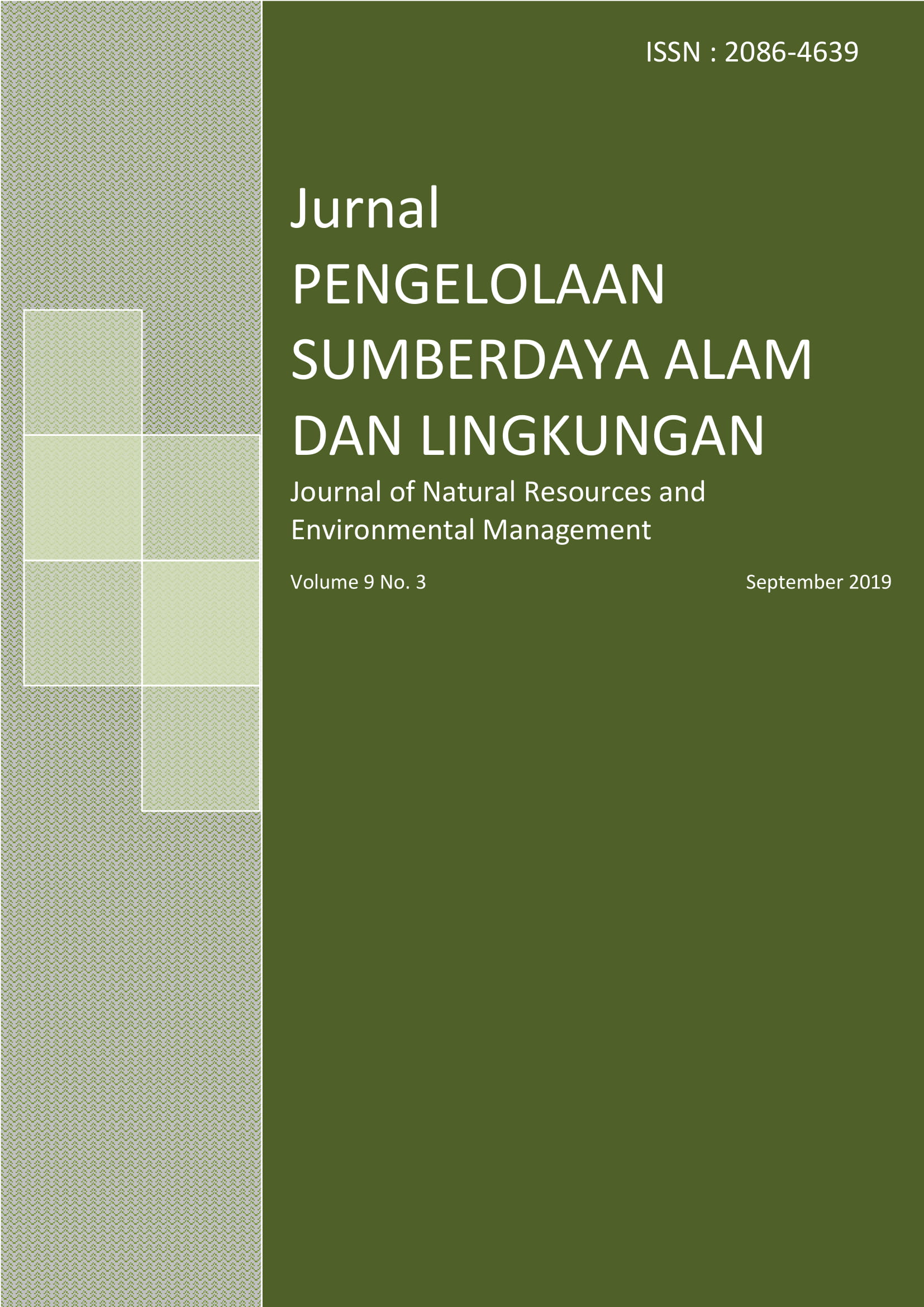Dinamika Hara Gambut Pada Penggunaan Lahan Hutan Sekunder, Semak Dan Kebun Kelapa Sawit
Abstract
Peat nutrient dynamics research was intended to study the characteristics and distribution of macro nutrients in peat water and peat in secondary forests, shrubs and oil palm plantations. This research was conducted with purposive sampling method. Observations on oil palm plantations were carried out at three ages of oil palm (5, 12, and 16 years). Secondary forest and shrub peatlands were used as a comparison. Sampling of peat water and peat was carried out during the rainy and dry season, at four distances from the collection drain (25, 50, 75, and 150 m). The results showed that nutrient levels in peat water during the dry season were greater than the wet season. The status of peat water and peat nutrients in secondary forests and shrubs is relatively the same as that of oil palm plantations that were fertilized. Seasonal, land use and distance from the collection channel differences did not have a major influence on the distribution and characteristics of macro nutrients on peat. The macro nutrients content of peat water and peat, however, showed an increase with the distance from the collection channel.
References
Couwenberg J, R Dommain, H Joosten. 2009. Greenhouse gas fluxes from tropical peatlands in south-east Asia. Global Change Biology, doi: 10.1111/j.1365-2486.2009.02016.x
Harianti M, Sutandi A, Saraswati R, Maswar, Sabiham S. 2017. Organic acids exudates and enzyme activities in the rhizosphere based on distance from the trunk of oil palm in peatland. Malaysian Journal of Soil Science,21, 73-88.
Radjagukguk, B. 2001. Perspektif permasalahan dan konsepsi pengelolaan lahan gambut tropika untuk pertanian berkelanjutan. Pidato Pengukuhan Jabatan Guru Besar pada Fakultas Pertanian Universitas Gadjah Mada. Yogyakarta.
Setyanto P, Wihardjaka KA , Yulianingsih E, Agus F. 2014. Emisi gas rumah kaca dari saluran drainase di lahan gambut Jabiren, Kalimantan Tengah. Prosiding Seminar Nasional. Pengelolaan Berkelanjutan Lahan Gambut Terdegradasi untuk Mitigasi Emisi GRK dan Peningkatan Nilai Ekonomi. Jakarta, 18-19 Agustus 2014. Badan Penelitian dan Pengembangan Pertanian. Kementerian Pertanian.
Sulistiyanto, Y., H. Vasander, J. Jauhiainen, J.O. Rieley and S.H. Limin, 2007. Mineral nutrient content of water at different depths in peatland in Central Kalimantan, Indonesia. Dalam: J.O. Rieley, C.J. Banks and B. Radjagukguk (Eds). Carbon-Climate-Human Interactions on Tropical Peatland; Carbon pools, fire, mitigation, restoration and wise use. Proceedings of International Symposium and Workshop on Tropical Peatland. Yogyakarta. Pp 77-82.
Suwondo, Sabiham S, Sumardjo, Paramudya B. 2010. Analisis lingkungan biofisik lahan gambut pada perkebunan kelapa sawit. J Hidrolitan. 1(3):20-28.
Takahashi H, Usup A, Hayasaka, H, Limin SH. 2002. Estimation of ground water level in a peat swamp forest as an index of peat/forest fire. In: Proceedings of the international symposiumon land management and biodiversity in Southeast Asia, Bali Indonesia, 17-20 September, 2002, pp 311–314.
USDA 2004. Soil Survey Laboratory Methods Manual. In Burt, R (Ed). Soil Survey Investigations Report No.42, Vers.4.0 Natural Resources Conservation Service.
Widyanto H, Nurhayati, Dariah A, Jamil A. 2014. Variasi temporal emisi CO2 di bawah perkebunan kelapa sawit pada lahan gambut di Riau. Prosiding Seminar Nasional. Pengelolaan Berkelanjutan Lahan Gambut Terdegradasi untuk Mitigasi Emisi GRK dan Peningkatan Nilai Ekonomi. Jakarta, 18-19 Agustus 2014. Badan Penelitiann dan Pengembangan Pertanian. Kementerian Pertanian.
Winarna, Murtilaksono K, Sabiham S, Sutandi A, Sutarta ES. 2015. Effect of groundwater level and steel slag aplication on soil moisture variability and actual hydrophobicity of peat soil in oil palm plantation. Journal Agron.14(1): 15-22.
Wösten JHM, Clymans E, Page SE, Rieley JO, Limin SH. 2008. Peat–water interrelationships in a tropical peatland ecosystem in Southeast Asia. Catena.73:212- 224.
Authors
Authors who publish with this journal agree to the following terms:
- Authors retain copyright and grant the journal right of first publication with the work simultaneously licensed under a Creative Commons Attribution License that allows others to share the work with an acknowledgement of the work's authorship and initial publication in this journal.
- Authors are able to enter into separate, additional contractual arrangements for the non-exclusive distribution of the journal's published version of the work (e.g., post it to an institutional repository or publish it in a book), with an acknowledgement of its initial publication in this journal.
- Authors are permitted and encouraged to post their work online (e.g., in institutional repositories or on their website) prior to and during the submission process, as it can lead to productive exchanges, as well as earlier and greater citation of published work (See The Effect of Open Access).





